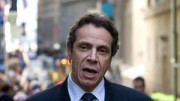Angelina Lemus was puzzled. She had no idea why every month as much as $96 was disappearing from her Citibank checking account.
Months later, Ms. Lemus finally figured out the mystery — or at least part of it. Citibank was taking out the money to pay a loan, with an interest rate of 18 percent, that was devised to cover the shortfall every time Ms. Lemus overdrew her checking account.
The problem was that Ms. Lemus, a home health care worker from Queens, said she never signed up for the line of credit and was unaware that she was borrowing from it every time her account dipped below zero.
In all, Ms. Lemus had amassed $3,400 in debt — a tangle of interest, principal and other fees that have damaged her credit.
Ms. Lemus is one of millions of Americans tripped up by overdraft practices, a murky corner of consumer banking that, despite a lot of hand-wringing in Washington, costly litigation and customer rancor, remains largely untouched by financial regulation.
In a push for transparency since the 2008 financial crisis, regulators require banks to clearly disclose and explain the terms of just about every financial product, including credit cards and mortgages. But overdraft practices still come with hidden costs and confusing terms, bank customers, lawyers and consumer advocates say.
Citibank declined to comment on Ms. Lemus’s situation. In a statement on its practices, a bank spokesman said, “Customers who choose overdraft lines of credit must enroll, and any line of credit balance appears on every monthly statement.” Over all, the spokesman said, “Citibank customers pay in fees a small fraction of what customers of other big banks pay.”
Typically, banks charge customers $35 every time they spend more than the balance in their checking account. Those fees add up, haunting borrowers and cannibalizing already low bank balances. One mistake can push checking accounts into the red, generating multiple fees in a single day.
But other, sometimes harmful practices are proliferating, too, like lines of credit that banks pitch as an alternative way to cover shortfalls in checking accounts but that can end up ensnaring customers like Ms. Lemus in a cycle of debt.
“It is such an insidious thing,” said Susan Shin, legal director of the New Economy Project, which works with community groups in New York.
It is by no means a new problem. In a series of class-action lawsuits beginning in 2009 against more than a dozen big banks, customers accused banks of hiding a practice known as reordering. The practice, the lawsuits revealed, involved deliberately processing large transactions like mortgage payments first before taking out smaller charges, like a purchase of coffee — even if customers bought the coffee first. By arranging the order of transactions, the banks could maximize the number of overdrafts they charged. At the time, some banks defended the practice, arguing it ensured that large, important bills were covered.
The lawsuits resulted in the banks paying more than $1.1 billion in settlements. Among them was TD Bank, which agreed to pay $62 million.
Today, TD Bank is still reordering transactions and informs customers about the practice in the fine print of its checking account agreements.
“Their position is ‘If we disclose it, we can get away with whatever the hell we want,’ ” said Mark Mangan, a TD Bank customer from Bloomfield, N.J., who has been hit with as much as $140 in overdraft fees in a single day.
When asked about its reordering of customer transactions, TD Bank said in statement that it planned to end the practice as soon as April.
“We know our customers have come to expect a certain level of convenience and an unparalleled experience from us, and meeting that expectation drives this decision,’’ said Judith Schmidt, a TD Bank spokeswoman. She declined to comment on Mr. Mangan’s experience.
Such small fees can amount to big profits for the banks. More than 11 percent of TD Bank’s total operating income came from overdraft fees and other consumer service fees during the first nine months of last year. That is roughly five times the industry average, according to Federal Deposit Insurance Corporation data compiled by SNL Financial, a research firm.
The TD Bank spokeswoman said its overdraft fees accounted for a proportionally larger share of its operation than at other banks because TD was focused primarily on consumer banking, while many other financial companies have a wider range of businesses, like investment banking.
The total number of overdraft fees has declined since the financial crisis, but their persistence reflects a reality of the banking industry: Regulations have crimped profits from once-profitable activities like lending.
It turns out that overdraft fees are the banks’ version of cigarette smoking, a habit that is tough to break.
The nation’s big consumer banks collected about $11 billion in overdraft fees last year, which accounted for 8 percent of their profits, according to a report by the Consumer Financial Protection Bureau.
Regulations, passed in 2010, require banks to give customers a choice of whether to incur overdraft fees or have a transaction declined.
But many customers end up confused by how overdrafts work. In their marketing materials, for example, banks present the choice of whether to sign up for overdraft as an offer of “overdraft protection” — a feature many customers thought would automatically deny transactions and shield them from incurring the fees at all. In reality, it is a service authorizing the banks to charge the overdraft fees. Navy Federal Credit Union, for example, brands its product OOPS, or “Optional Overdraft Protection Service.”
“There was a push to frame ‘opt-in’ as a positive thing and sometimes gloss over the details,” said Samantha Kinney, who used to work at a retail bank and is now a financial counselor at Neighborhood Trust Financial Partners in New York.
Mr. Mangan, who works as a technology consultant, says he is the first to acknowledge that when he bounces a check, he should pay a penalty. But, one day last May, he noticed that TD Bank Group had charged him a $35 overdraft fee even though his account still had money in it.
That afternoon, Mr. Mangan withdrew $20 in cash at a TD Bank A.T.M., leaving only a few dollars in his account. That night, TD Bank processed a $125 check that he had written days earlier. As a result, the bank charged him two fees: one for the bounced check and another for the $20 A.T.M. withdrawal.
“I had that money in my account. I have the slip to prove it,” Mr. Mangan said.
The Consumer Financial Protection Bureau is hashing out rules that could limit reordering, according to people briefed on the matter but not authorized to speak publicly about it. Outlines of the rules are expected this year.
Still, the regulation is not a panacea, consumer advocates say. It will not address the lines of credit, which are considered loans. The credit lines are supposed to be less expensive than traditional overdrafts, and if customers pay off the loans quickly, the charges amount to only a few dollars.
But the costs can add up. KeyBank’s credit line, for example, carries a 15 percent interest rate, a $10 fee for every time customers overdraw their account, a $30 annual fee and $25 late fees.
The real problems arise, though, when customers have no idea that they signed up for the loans. It is an easy mistake to make, bank customers say, since the credit lines are often tucked into checking account agreements and do not require a separate signature to be approved.
Citigroup’s line of credit is called “Checking Plus,” which to Ms. Lemus, who speaks primarily Spanish, did not appear to be anything like a loan. When she first noticed the $96 withdrawals, Ms. Lemus was alarmed.
But what she learned was even more distressing: Every time she overdrew her checking account, Citigroup was lending her money at 18.25 percent to cover the shortfalls. There were other unusual features and charges associated with the loan. Citigroup extended the loan in $100 increments, even if she was short by only $35.
And in one month, Citigroup withdrew the loan payment two days after the due date the bank itself had set. For this, Citigroup collected an additional $25 for the late payment.
“I felt so humiliated,” Ms. Lemus said.
If she made just the minimum payment, it would take Ms. Lemus 13 years to pay off her credit line. The bank has been trying to collect the debt.
Source: www.nytimes.com





Be the first to comment on "Overdraft Practices Continue to Gut Bank Accounts and Haunt Customers"